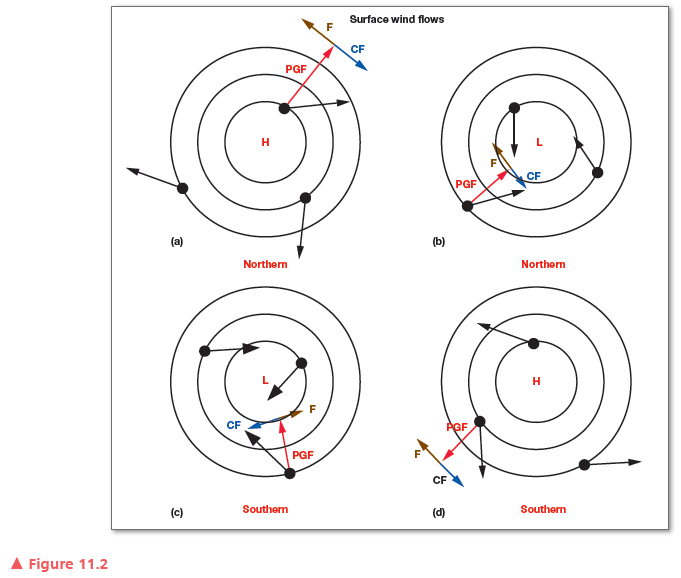Figure 11.2 shows surface wind flow in the Northern and Southern Hemispheres. Place an H or an L in the center of each example to indicate what type of pressure is shown and write the name of the correct hemisphere below each of the examples. Pick one arrow from each example and draw your own arrows to indicate the pressure-gradient force in red, Coriolis force in blue, and friction in brown for that figure, or colors as indicated by your professor, as shown in Figure 11.2a. Label the pressuregradient force arrow with PGF, the Coriolis force arrow with CF, and the friction with F.
What will be an ideal response?

You might also like to view...
The goal of the Montreal Protocol was to _____
A. prevent global warming B. micromanage the actions of the United States C. prevent tropospheric ozone depletion D. slow global climate change E. prevent stratospheric ozone depletion
Natural gas is mainly consumed by ________
A) transportation B) agriculture C) industry D) nuclear power E) households
Why are the Ural Mountains important to Russia's manufacturing centers?
A) They are an important source of water needed for manufacturing. B) They are near major cities where the primary markets for Russia's goods are located. C) They have the largest deposits of industrial minerals in Russia. D) They have many fast-moving rivers, which provide hydropower for Russia's factories. E) They are the key source of uranium that fuels the nuclear power plants that power Russia's factories.
________ is the term for solution topography in regions of limestone bedrock
A) Hydrothermal B) Dripstone C) Doline D) Travertine E) Karst